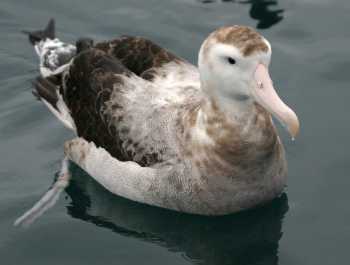The paper's abstract follows:
"The age at first breeding is an important demographic parameter in determining maximum growth rate, population size and generation time and is a key parameter in calculating the potential biological removal of birds. Albatrosses and petrels do not begin breeding for many years, with some first breeding in their teens. This means that even long-term studies of birds banded as chicks may not last long enough to observe the entire process of recruitment to breeding. Estimates based only on observed data (the naive estimate) may be biased by imperfect observation, emigration, and study duration. Instead, modelling approaches should be used to estimate the mean age at first breeding, but these must be used carefully. Here, we show the large negative bias that may be caused by limited study duration and emigration when the naive estimate is used. Capture-mark-recapture methods combined with additional assumptions about emigration can alleviate the bias, provided that an appropriate model is used. Using these methods, we analysed data collected between 1991 and 2006 on 1,246 Gibson's albatrosses (Diomedea gibsoni) banded as chicks (mostly banded from 1995 onwards) and 1,258 birds banded as adults. While 402 birds banded as chicks were observed returning to the study area, only 42 were observed breeding. With limited data, model-based approaches must be used, and assumptions about recruitment to breeding play an additional role in the estimate of the age at first breeding. In particular, the function chosen for recruitment to breeding for older age classes cannot be compared to data. Three recruitment functions are compared to show the large sensitivity of the estimated mean age at first breeding to the assumed functional form."

Reference:
Dillingham P.W., Elliott, G.P., Walker, K.J. & Fletcher, D. 2011. Adjusting age at first breeding of albatrosses and petrels for emigration and study duration. Journal of Ornithology DOI: 10.1007/s10336-011-0729-7.
John Cooper, ACAP Information Officer, 6 October 2011

 English
English  Français
Français  Español
Español